Country Wales, United Kingdom Units decommissioned 2 x 490 MW Construction began 1963 Location Anglesey Commission date 1971 | Operator(s) Magnox Ltd Reactor type Magnox Decommission date 2015 Status Closed | |
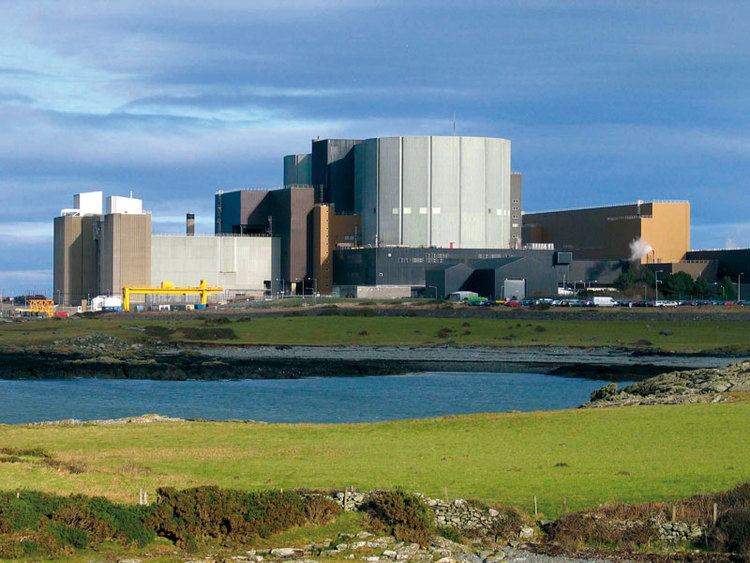 | ||
Reactor supplier The Nuclear Power Group Owner Nuclear Decommissioning Authority | ||
Wylfa nuclear power station under construction 1965
The shutdown Wylfa Nuclear Power Station (Welsh: Atomfa'r Wylfa) is situated just west of Cemaes Bay on the island of Anglesey, North Wales. Its location on the coast provided a cooling source for its operation.
Contents
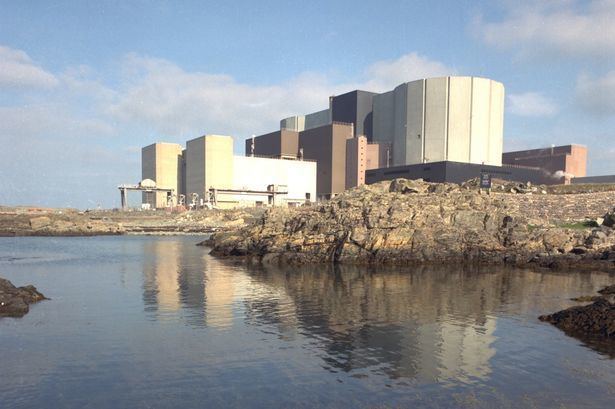
Wylfa houses two 490 MW Magnox nuclear reactors, "Reactor 1" and "Reactor 2", which were built from 1963 and became operational in 1971.

Reactor 2 was retired in 2012, and on 30 December 2015, Reactor 1 was also shut down, after more than 44 years of operating.
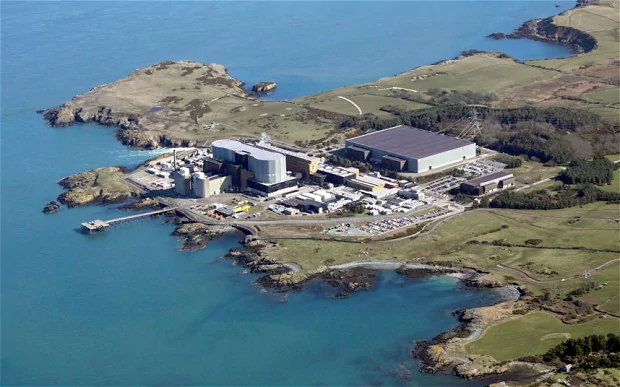
History
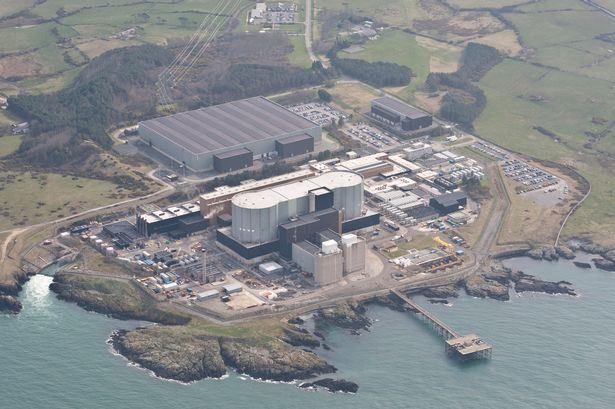
The construction of the power station, which was undertaken by British Nuclear Design & Construction (BNDC), a consortium backed by English Electric, Babcock & Wilcox Ltd and Taylor Woodrow Construction, began in 1963. The reactors were supplied by The Nuclear Power Group (TNPG) and the turbines by English Electric.
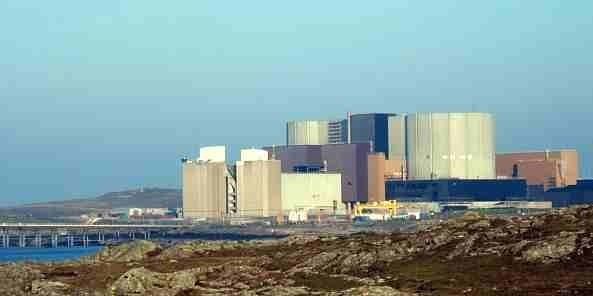
It was the second nuclear power station to be built in Wales, after Trawsfynydd. Following the closure of Trawsfynydd in 1991, Wylfa became the only nuclear power station in Wales.
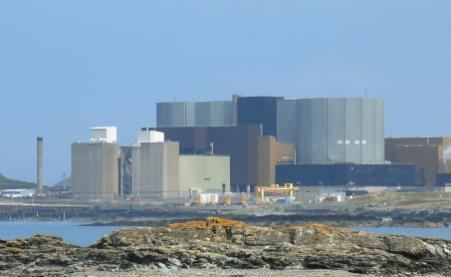
Wylfa houses two 490 MW Magnox nuclear reactors, "Reactor 1" and "Reactor 2", which were built from 1963 and became operational in 1971. Wylfa typically supplied 23 GW h of electricity daily when they were both in service. These were the largest and last Magnox-type reactors to be built in the UK. Wylfa was the second British nuclear power station, following Oldbury, to have a pre-stressed concrete pressure vessel instead of steel for easier construction and enhanced safety.
The original design output was 1,190 MW but unexpected accelerated ("breakaway") corrosion of mild steel components of the gas circuit in hot CO2 was detected even before the first reactor began operating. The channel gas outlet temperature, the temperature at which the CO2 leaves the fuel channels in the reactor core, had to be reduced, initially dropping the power output to 840 MW, which was later raised to 980 MW as more experience accumulated.
The graphite cores each weigh 3,800 tonnes (3,700 long tons); 6,156 vertical fuel channels contain over 49,248 natural uranium magnox-clad fuel elements, hence the name magnox reactor. A further 200 channels allow boron control rods to enter the reactor and control the nuclear reaction. The primary coolant in the reactors is carbon dioxide gas.
The power station is managed by Magnox Ltd, formerly Magnox North, formerly British Nuclear Group, formerly Magnox Electric, formerly Nuclear Electric, formerly National Power, formerly the Central Electricity Generating Board (CEGB). The site is owned by the Nuclear Decommissioning Authority (NDA). Its purpose is to oversee the decommissioning and clean-up of the UK's civil nuclear legacy.
During its operational life substantial works have been needed to strengthen the reactors against deteriorating welds discovered in the safety review in April 2000. Amid public controversy, Greenpeace issued an independent safety appraisal by the nuclear engineering consultancy Large Associates, but the permit to restart operation was given in August 2001. In addition to welding weaknesses, radiolytic depletion of the graphite moderator blocks was still of concern and PAWB continue to campaign for early shut-down of the plant as well as against any nuclear replacement.
On 20 July 2006 the NDA announced that the station would be shut down in 2010 to enable the closure and decommissioning of the Magnox spent fuel reprocessing plant at Sellafield. Springfields Fuels Limited ended production of Magnox fuel elements in 2008 due to these plans. However, in 2010 the NDA announced an extension to 2012, beyond Wylfa's 40th anniversary as a generating power station in January 2011, due to schedule slippage at Sellafield which would allow Wylfa additional time before final defuelling. At this time, a strategy was also devised to maximise the generation from the remaining fuel stock given that new fuel could no longer be manufactured. This required a change in the distribution of fuel within the reactors, as well as a the closure of Reactor 2 in 2012 to allow this fuel to be transferred into Reactor 1. Reactor 2 ceased generating on 25 April 2012 at 19:02 BST, allowing Reactor 1 to continue to operate. A license extension to operate Reactor 1 until 31 December 2015 was granted in September 2014.
Reactor 1 was shut down on 30 December 2015. De-fuelling will start in 2016, and the whole site should be fuel free by late 2018. Decommissioning will take several decades.
Future nuclear plant plans
A second plant named Wylfa Newydd (previously referred to as Wylfa B) has been proposed. Wylfa Newydd's proposal has been the subject of local opposition, led by the group People Against Wylfa B (PAWB – "pawb" is Welsh for "everyone"). In March 2006 the local council voted to extend the life of Wylfa A and to support the construction of Wylfa B, citing the potential loss of employment in the smelter works and nuclear station.
Horizon Nuclear Power, originally an E.ON and RWE joint venture, bought by Hitachi in 2012, announced in 2009 intentions to install about 3,000 MWe of new nuclear plant at Wylfa. Horizon is planning to build an Advanced Boiling Water Reactor ABWR at a site to the south of the existing Wylfa station.
On 18 October 2010 the British government announced that Wylfa was one of the eight sites it considered suitable for future nuclear power stations.
In January 2012, three hundred anti-nuclear protesters took to the streets of Llangefni, against plans to build a new nuclear power station at Wylfa. The march was organised by organisations including Pobl Atal Wylfa B, Greenpeace and Cymdeithas yr Iaith, which are supporting farmer Richard Jones who is in dispute with Horizon.
On 29 March 2012 E.ON and RWE npower announced that their plans to build the new power station had been shelved.
On 30 October 2012, it was announced that Hitachi had bought the UK nuclear project from E.On and RWE. In an interview, a spokesman from the anti-nuclear group PAWB said "We don't want a 'Wylfashima' on Ynys Mon".
Horizon planned initial site work at Wylfa to begin in 2015, with building work starting in 2018 and generation starting in the mid-2020s.
The scheme now includes a tunnel under the Menai Strait to carry the power cables to protect the conservation worth of the Strait and the Area of Outstanding Natural Beauty
